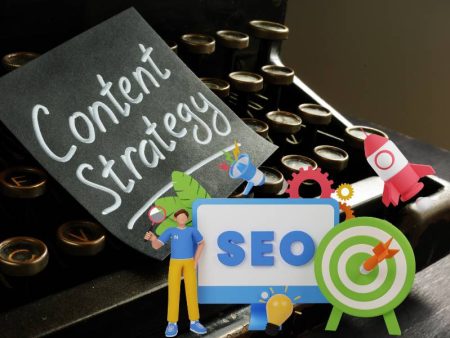Ever had one of those “WOW, they get me” moments while browsing online? You click on socks, and suddenly your entire homepage is filled with cozy autumn boot socks—even though it’s June. Or maybe you’re shopping for phone cases, and the site suggests a matching PopSocket before you’ve even thought of it. Creepy? Sure. Amazingly convenient? Absolutely.
That right there is the art and science of AI-powered product recommendations. Today, let’s go on a little adventure—no code required—behind that magic. We’ll talk real emotions, genuine stories, and yes, a bit of geek speak. But mostly, we’ll explore how a humble “you might also like” suggestion can feel like a friendly nudge rather than a creepy algorithm.
The Unboxing Moment: Why Recommendations Matter
Let me ask you a question:
Have you ever opened a subscription box or received a gift that seemed tailor-made for you? That sinking feeling of “This must’ve been made just for me”—that’s the emotional equivalent of a great recommendation.
In e-commerce, we crave that feeling. I know I do. And brands everywhere are racing to replicate it digitally. It’s the difference between feeling like a faceless buyer—”Add to cart?”—and feeling like a VIP. That’s the power of great suggestions.
The Data Buffet: How AI Learns What You Like
There’s no mind-reading here, just lots and lots of data—and intelligent tools to make sense of it.
Imagine this scenario:
- A user searches for “waterproof hiking jacket.”
- They click on two blue ones, compare prices, then leave.
- Three days later, they revisit the site.
What should pop up? Another waterproof jacket? Sure. Maybe one in a different color—or a matching fleece. Nike boots? Probably not.
Here’s how that works under the hood:
- Collaborative filtering: Recommending what similar users bought.
- Content-based filtering: “You liked this hiking jacket; here are jackets with similar specs.”
- Hybrid models: A combo of both, with seasoning. That seasoning? It’s where it gets interesting.
The Nudge You Don’t Hate: Timing and Emotional Resonance
Let’s be honest. Not all recommendations are equal.
I once got an email five minutes after buying headphones: “Because you bought X, you might also like Y.” Ugh.
But another time, I bought a fancy cheese, and a follow-up week later suggested pairing that cheese with artisanal crackers. Smart, not annoying.
Timing and tone matter. Done the right way? That kind of suggestion feels like your friendly sommelier—not like a pushy salesman. And guess what? AI is behind both experiences.
By analyzing purchase time, shipping info, browsing patterns, AI recommends when and how to reach out—maximizing value, minimizing annoyance.
Shopify Isn’t the Only One: Platforms + Personalization
You don’t need Amazon-level infrastructure to add smart suggestions to your store. Even small sites can benefit.
With APIs, plug-ins, even basic CSV integrations, brands can add AI recommendation features in a few hours. And that’s where platforms labeled under terms like Ecommerce come in, offering out-of-the-box tools.
But it gets better. Combine that with Ecommerce AI Automation, and you’re not just recommending—you’re automating email follow-ups, in-cart pop-ups, cross-sell pushes—all powered by smart insights in real-time.
Story Time: When AI Saved My Sanity (and My Sale)
Let me spill the tea.
Last holiday season, I hopped onto a niche sock company’s site—just browsing, honestly. I added a playful red sock to my cart. I left. I got distracted. Years of scrolling habits kicked in.
Later that afternoon, I get an email:
“Spotted in your cart: Jingle Bell Sock! 😄 Want to complete your gift?”
Button: “Yes, please!”
I’m in a public café. Everyone saw me click it like a goofball. I ordered it. I felt seen. And I laughed saying, “That email… nailed it.”
It wasn’t creepy. It was timely, personal, helpful. And yes—that was AI doing its thing, behind the scenes.
Non-Linear Flow: Where AI Keeps Up While You Don’t
Here’s the kicker: AI keeps track of multiple journeys at once. You’re browsing. You’re abandoning. You’re comparing. You’re buying. You bounce. And AI—quietly, carefully—personalizes follow-ups accordingly.
No need to build 20 flowcharts. Just integrate the AI tool. Let the “if this, then that” do the rest. Here’s a quick outline:
- View product → show related in pop-up
- Add to cart, abandon → send nudge after 1 hour
- Purchase made → suggest complementary item after 48 hours
- No reorder after X days? Win-back email w/ loyalty points
It’s smart, adaptable, asynchronous. Brands can scale empathy. It’s emotional automation.
Friendly Banter Over Boring “Upsell” Messaging
Let’s compare a dull approach:
“Buy socks & get 10% off these gloves!”
vs.
“Psst… wouldn’t these gloves look sweet with your new socks? Trust me—I’m chilled.”
I prefer the second. And guess what? That kind of friendly tone comes from your brand—but AI helps deliver it at scale. You might write the banter. AI figures out when to show it.
Natural Imperfections & Emotional Nuance
Here’s the beauty of AI recommendations: they’re not perfect. And that can be good.
If Amazon suggests a horror novel after you buy gardening supplies, it annoys. But a half-accurate suggestion—a similar garden tool or outdoor accessory—that’s delightful. The imperfections feel human. The nuance feels lived-in.
AI recommendation systems often balance novelty with relevance—so you discover something new within your wheelhouse. And that surprise drives delight.
Common Questions I Hear
Isn’t this creepy?
It can be if overdone. That same sock company I mentioned sends maybe two emails max, with playful tone—never pushes. Done thoughtfully, it feels like genuine service.
Is AI expensive?
Not at all. Many platforms have tiered pricing. You can start small and scale. The ROI on a few extra purchases covers the cost fast.
Does this replace email campaigns?
Nope—it enhances them. Think of AI recommendations as sidekicks to your main storyline. They complement, not dominate.
The Emotional Payoff: Connection Without the Creep
What I love most? When customers feel valued, not sold to.
A personalized gift suggestion after one purchase says: “You matter.” It builds trust. It sparks loyalty. It whispers, “We’re paying attention—and we care.”
And that emotional connection? It’s not fluff. It drives repeat business, brand love, and word-of-mouth buzz—things no algorithm can replicate by itself.
Step-by-Step Guide: Building Your First Recommendation Flow
- Choose your AI tool – Plugin, API, platform
- Integrate into your store – Usually simple setup
- Define your rules – abandoned carts, product views, repeat buyers, etc.
- Write brand voice-friendly copy – leave room for human banter
- Launch a few flows – cart abandon, viewed product, post-purchase
- Monitor metrics – click-throughs, conversions, unsubscribes
- Tweak tone, timing, frequency for emotional balance
Remember: treat your flows like a conversation, not a broadcast.
Geek Break: Multi-Touch and Real-Time Adjustments
Let me geek out a bit—promise to keep it light.
Modern AI engines support multi-touch attribution. That means they can track a user’s path:
- First interaction: Viewed jacket, clicked fleece
- Second: Added to cart, abandoned
- Third: Received cross-sell email, shipped purchase
- Fourth: Suggested a matching scarf after delivery
Each touchpoint is powered by data and optimized by AI… yet told in your voice. It’s storytelling with logic powering the backend.
Imperfection Is OK: Surprise Discovery Wins
Remember that sock story? The recommendation “completed the puzzle” rather than filled in a weird gap. That’s the sweet spot for discovery.
Too broad, it’s random. Too narrow, it’s redundant. But when your suggestion shows just enough creativity within what the user already engages with? That’s a delight.
Human + AI = Scaled Relationship
That’s the magic, really. You, writing the messages. AI, handling the timing and targeting puzzle. It’s not about replacing you—it’s about letting your brand voice reach more people, more meaningfully.
Final Thoughts
AI-powered product recommendations aren’t a gimmicky add-on—they’re a new baseline for thoughtful, human-centric shopping experiences. When done with care, they bring joy. When timed thoughtfully, they feel helpful, never pushy.
What’s next for you?
- Explore platforms labeled under Ecommerce
- Consider adding Ecommerce AI Automation to your toolkit
- Start small: one post-purchase email, one cart-abandon nudge
- Write like a friend—warm, fun, empathetic
- Let AI optimize timing, placement, triggers
TL;DR
- AI recommendations = data-driven personal suggestions
- Emotional timing + tone = delight, not creepiness
- You write the voice; AI manages the logic
- Tools are accessible and cost-effective
- Small flows = big impact
- Human + AI = scalable connection
Wanna Test This Together?
If you’d like help drafting your recommendation copy, testing triggers, or mapping flows—happy to co-pilot! Let’s make your store feel less like a website and more like a friend who gets what you want.
Until then—may your recommendations land with kindness and your sales feel like happy surprises. 😊


